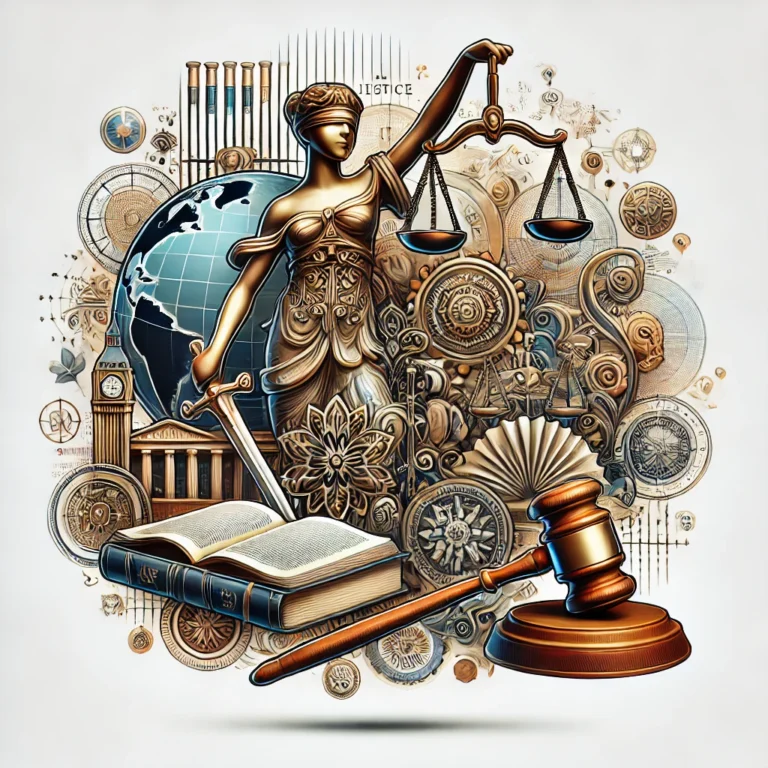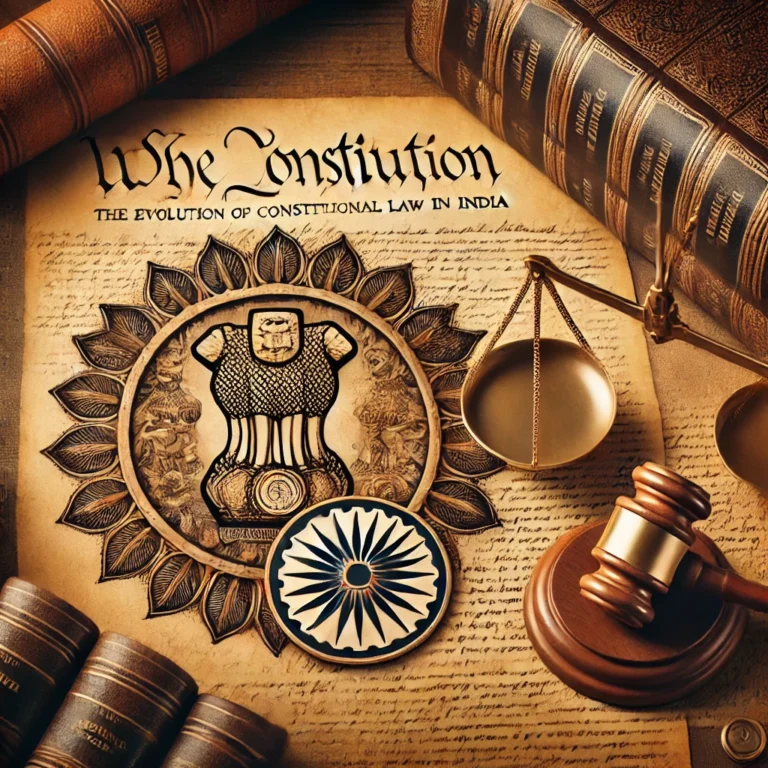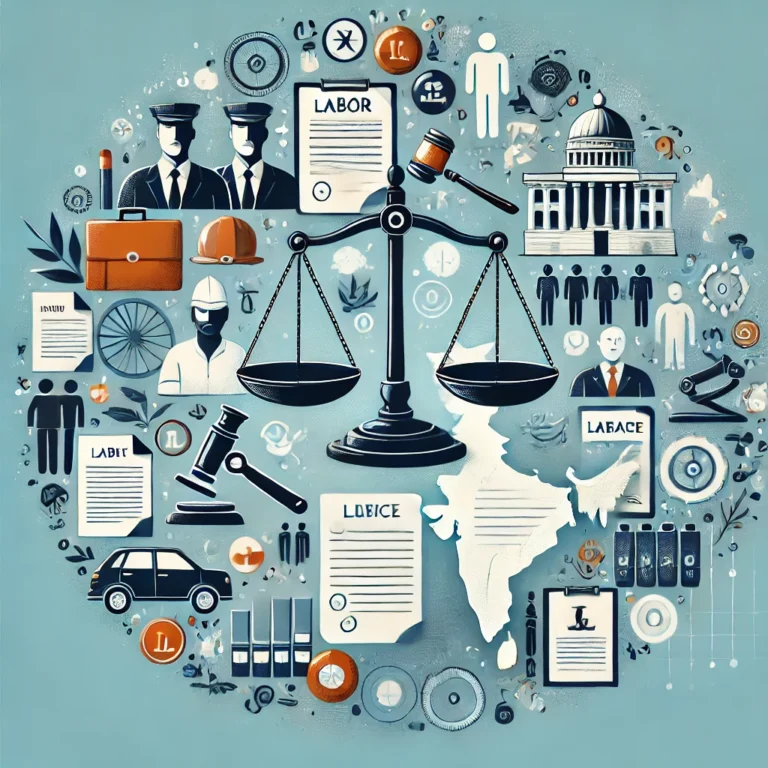The Role of the Supreme Court in Shaping Indian Law
The Supreme Court of India, established on January 28, 1950, stands as the highest judicial authority in the country. Its role transcends mere interpretation of laws; it actively shapes the legal landscape of India through its judgments, ensuring that justice is not only done but also seen to be done. The Supreme Court’s influence on Indian law is profound, affecting the lives of millions and the governance of the nation. This blog explores the pivotal role the Supreme Court plays in shaping Indian law.
Historical Context and Evolution
The Supreme Court’s origins can be traced back to the Federal Court of India, which was established in 1937 under the Government of India Act, 1935. However, the Supreme Court as we know it today was established by the Constitution of India in 1950. Initially, its role was limited to being an appellate court, hearing appeals against the judgments of lower courts. Over time, however, the Supreme Court has evolved into a powerful institution that not only interprets the Constitution but also protects the rights of citizens and ensures the rule of law.
Constitutional Guardian
One of the most critical functions of the Supreme Court is its role as the guardian of the Constitution. The Court has the authority to review and invalidate any law or executive action that it finds to be in violation of the Constitution. This power of judicial review is fundamental to the checks and balances system, ensuring that no branch of government exceeds its constitutional limits.
The landmark case of Kesavananda Bharati v. State of Kerala (1973) is a prime example of the Supreme Court’s role in upholding the Constitution. In this case, the Court propounded the “Basic Structure Doctrine,” which holds that certain fundamental features of the Constitution cannot be altered even by a constitutional amendment. This doctrine has since become a cornerstone of Indian constitutional law, protecting the core principles of democracy, rule of law, and separation of powers.
Protection of Fundamental Rights
The Supreme Court plays a pivotal role in safeguarding the fundamental rights of Indian citizens. Articles 32 and 226 of the Constitution empower the Supreme Court and High Courts, respectively, to issue writs for the enforcement of fundamental rights. Over the years, the Court has expanded the scope of these rights through progressive interpretations.
For instance, in the case of Maneka Gandhi v. Union of India (1978), the Supreme Court ruled that the right to life and personal liberty under Article 21 is not limited to mere physical existence but includes the right to live with dignity. This judgment marked a significant departure from earlier narrow interpretations and laid the groundwork for the expansion of human rights in India.
Similarly, in Vishakha v. State of Rajasthan (1997), the Court recognized the need for protection against sexual harassment at the workplace, leading to the formulation of guidelines that were later codified into law. This case exemplifies how the Supreme Court can address societal issues by interpreting fundamental rights in a contemporary context.
Judicial Activism
Judicial activism refers to the proactive role played by the judiciary in addressing issues that may not be adequately addressed by the legislative or executive branches. The Supreme Court of India has often been accused of judicial activism, particularly in cases where it has stepped in to fill a void left by other branches of government.
One of the most prominent examples of judicial activism is the Public Interest Litigation (PIL) mechanism. Through PILs, any citizen or group can approach the Supreme Court directly for the redressal of public wrongs, even if they are not personally affected by the issue. This has allowed the Court to address a wide range of issues, from environmental protection to human rights abuses.
The MC Mehta v. Union of India cases are a series of PILs that led to significant environmental reforms in India. These cases resulted in the closure of polluting industries, the introduction of cleaner fuels, and the protection of natural resources. The Supreme Court’s proactive stance in these cases underscores its commitment to protecting the environment and public health, even when faced with resistance from powerful industrial interests.
Social Justice and Equality
The Supreme Court has played a crucial role in advancing social justice and promoting equality in India. It has delivered landmark judgments that have dismantled discriminatory practices and empowered marginalized communities.
In Indra Sawhney v. Union of India (1992), the Court upheld the validity of reservations for Other Backward Classes (OBCs) in government jobs, reinforcing the principles of affirmative action and social justice. This judgment was a significant step towards ensuring that historically disadvantaged communities have equal opportunities to succeed.
Another landmark case is Navtej Singh Johar v. Union of India (2018), where the Supreme Court decriminalized consensual same-sex relations by striking down Section 377 of the Indian Penal Code. This judgment was celebrated as a victory for LGBTQ+ rights in India and marked a significant shift towards inclusivity and equality.
Balancing Federalism
India is a federal country with a clear division of powers between the central and state governments. The Supreme Court plays a crucial role in maintaining this balance by adjudicating disputes between the Centre and the states or between states themselves.
The S.R. Bommai v. Union of India (1994) case is a landmark judgment in this context. The Court ruled that the President’s Rule imposed under Article 356 is subject to judicial review, thereby preventing the arbitrary dismissal of state governments by the Centre. This judgment reinforced the principles of federalism and democracy in India.
The Supreme Court’s Influence on Legislation
While the Supreme Court does not have the power to legislate, its judgments often influence the legislative process. Parliament and state legislatures have enacted laws to give effect to the Court’s directives or to address issues highlighted by the Court.
For example, the Right to Information Act (2005) was enacted in response to the Court’s observations on the need for transparency and accountability in governance. Similarly, the Prevention of Sexual Harassment at Workplace Act (2013) was a direct result of the Vishakha judgment.
The Supreme Court’s influence extends beyond specific laws to the overall legal and policy framework of the country. Its judgments often set precedents that guide the interpretation and application of laws, ensuring that they evolve in line with contemporary values and principles.
Challenges and Criticisms
Despite its significant contributions, the Supreme Court has faced criticism on various fronts. Some argue that the Court’s activism sometimes oversteps its mandate, encroaching on the functions of the legislature and executive. Others point to the growing backlog of cases, which undermines the Court’s ability to deliver timely justice.
The appointment process of judges, known as the “Collegium System,” has also been a subject of debate. Critics argue that the lack of transparency and accountability in this process affects the independence and credibility of the judiciary. The Supreme Court’s decision to strike down the National Judicial Appointments Commission (NJAC) in 2015 was seen by some as an assertion of judicial independence, while others viewed it as resistance to much-needed reforms.
Conclusion
The Supreme Court of India plays an indispensable role in shaping Indian law and ensuring justice for all citizens. Its judgments have had a profound impact on the legal, social, and political landscape of the country. As the guardian of the Constitution and the protector of fundamental rights, the Court continues to evolve, addressing new challenges and upholding the principles of democracy, equality, and justice.
However, with great power comes great responsibility. The Supreme Court must balance its proactive role with the need to respect the separation of powers and ensure that its decisions are not only legally sound but also socially just. As India continues to evolve, the Supreme Court will undoubtedly remain a cornerstone of its legal system, guiding the nation towards a more just and equitable future.










